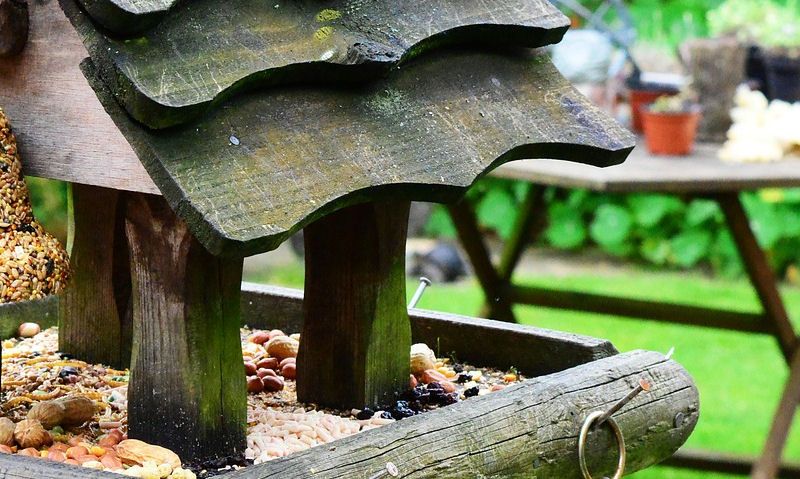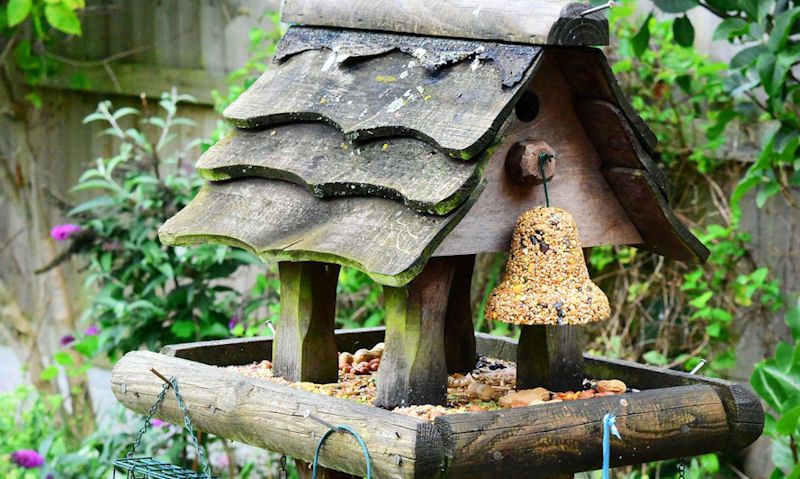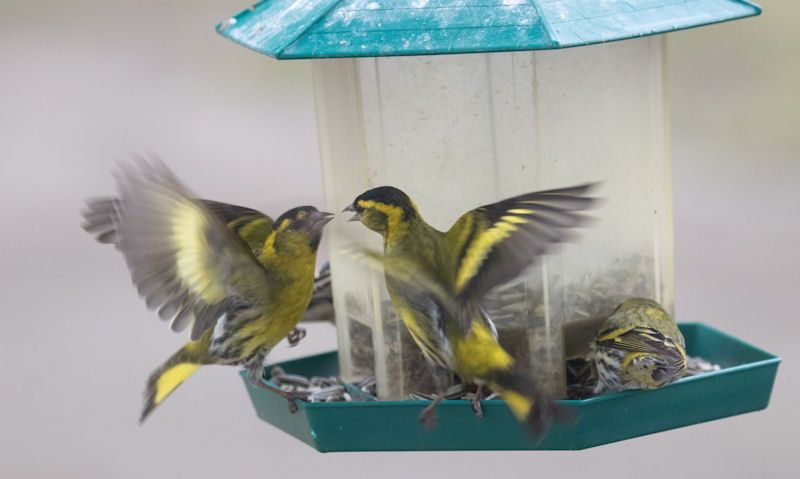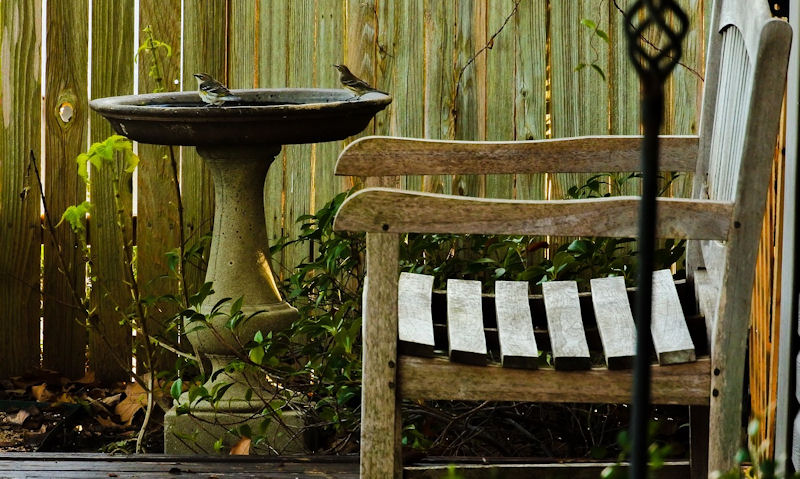What to put on a bird table
You can just about put anything on a bird table, providing its not obstructive too feeding birds, or more importantly is not a danger to their health.
What to put on a bird table can be the big FOUR bird food favourites; including seed mixes, peanuts, dried mealworms and fat balls. You can also use household scraps such as bread crusts only or leftover fruit and vegetables. But in doing so you'd need to maintain a high standard of hygiene.
Don't worry to much about what to feed birds in your garden, because if you don't have specialty wild bird feed to hand, scraps out of your kitchen might do it.
While fresh or bruised fruit is fun to try, using the bird table to hold cut open apples or pears is a thought - but so to can you experiment with veggies.
However, first port of call would be wild bird seed mixes, peanuts or fat balls - though you might find suet blocks to be better as they can't roll off the bird table.
In using different kinds of scraps to feed wild birds, these can deteriorate much sooner than specialty foods that are for outdoor use.
To put all types of food on your bird table is one thing, but remember where's there's a food source, along comes trouble.
But as a bird table is commonly made to be high off the ground, the bird food or scraps should be safe from cats or other pets.
That is not to say the larger, more nuisance birds won't come along to spoil your day, so you could throw peanuts or seeds for crows or pigeons, to at least stop them attempting to use the bird table, if they dare.
Having said all that, be sure to read my what not to feed wild birds guide on the bird table or in bird feeders - as you risk making them poorly, or something worse.
The BIG four bird feed
To make the most of your bird table you should focus on more proven wild bird feed, rather than experimenting with new food types.
I would then say only serve up the big four wild bird food favourites, those being suet fat ball, seed mixes, peanuts and if you like - dried mealworms scattered on the feeding platform.
And let's not forget to throw bird feed over the lawn or patio to accommodate the ground feeding birds only.
If you fail to feed garden birds with the food mentioned then you'd certainly have a task on your hand - or else there's an unknown issue that is stopping birds from feeding.
For now, only serve wild birds peanuts, seeds, fat balls or suet in block form, while there's certainly no harm trying out dried mealworms for wild birds.
Little helpings to avoid waste
In offering up their favourite bird food, I recommended you only leave out on the bird table platform what will be eaten on the day.
Certainly no harm with the food going uneaten overnight, but don't leave out so much food it takes several days for wild birds to use it up.
Instead you'd want to only put out a little amount of bird food - peanuts, seeds with maybe one or two fat balls on top of the bird table, to measure how much wild birds in your garden consume on a daily basis.
Having said that, for ease of use you will want to only use flat suet blocks for wild birds as the fat ball kind like to roll off bird tables.
So to avoid waste under your bird table only use what you know the birds will eat quickly.
That includes using as little bird feed as possible on any given day, with the opportunity to replenish once in a while as the food runs low.
Centre position food to stay dry
What kind of wild bird feed you put on a bird table is completely up to you, as you'd need to accommodate your garden birds needs.
But in doing so you need to preserve the life span of the bird feed as best you can while out on the elements, to stop it going rotten on the bird table.
Its then imperative you position the bird feed in the middle of the feeding platform.

That is to make sure the bird table roof is protecting the feed as best it can, so rain water never comes into contact with the feed - or the heat from the sun for that matter.
And this method will only work mind you if you are using a bird table on stand, as it won't matter much if an open bird table is in use.
Not to attract unwanted birds
Know that when you feed small common garden birds, there's always the larger birds who will follow suite.
And to be honest there's little you can do other than buying a bird table for small birds only, but that is not to say the more cunning larger birds can still access the feed sitting under the bird table roof.
To position the bird feed on the centre of the bird table, while under a low eave roof - this will certainly go a long way in helping you keep nuisance birds at bay.
Birds of all kinds feed on nuts, seeds and fatty foods you intend to use on the bird table, so there's certainly no harm in throwing a handful to large birds if they are stopping the small birds you want to see feed off you bird table.
Don't waste an opportunity to continue to feed smaller birds if the larger ones won't go away.
Simply hang bird seed feeders off the rim of the bird table as larger birds struggle to perch on them - all while keeping the bird table clean of food for now.
Conclusion
What you should put on a bird table within the UK is British birds favourite food, they are the big four that are guaranteed to see success.
Never go without bird seed mixes as a large number of bird species who use seed feeders in the garden, do actually consume seeds in their natural diet.
That also goes for their favourite peanuts with a guarantee too see the fat balls being consumed early on.
Though I would say fat balls can roll in wind or by the birds, so certainly consider using suet blocks as an alternative while using them on a bird table.
Maintain freshness of the food in use so make sure they are positioned on the centre of the feeding platform, as its the furthest away from the edges where they would otherwise get soaked in the rain.
Feeding smaller, common garden birds is an interesting hobby, but the height of the bird table with a large feeding platform will make sure you don't miss the action.


